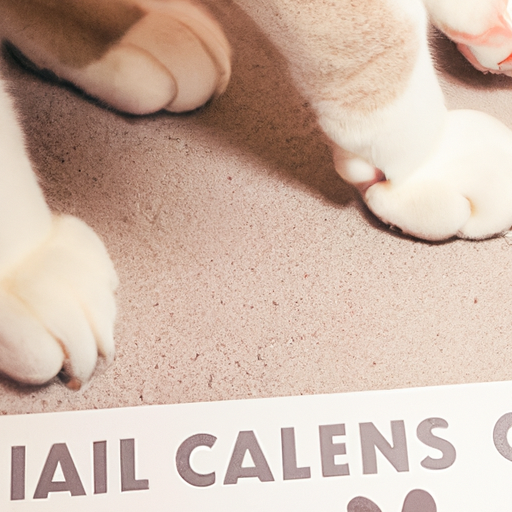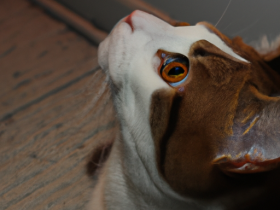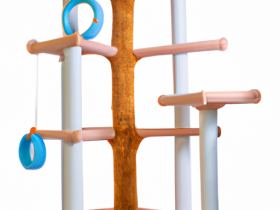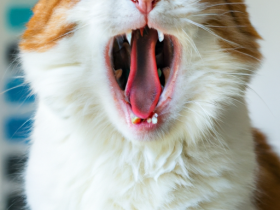“Make an Informed Decision: Understand the Pros and Cons of Declawing Cats”
Introduction
Declawing cats is a controversial topic that has been debated for many years. It is a procedure that involves the removal of the claws from a cat’s paws. While some people believe that declawing cats is a necessary procedure to protect furniture and people from scratches, others argue that it is an inhumane and unnecessary practice. In this article, we will discuss the pros and cons of declawing cats so that you can make an informed decision about whether or not it is the right choice for your pet. We will look at the potential benefits and risks associated with the procedure, as well as the alternatives that are available.
Exploring the Debate: Examining the Pros and Cons of Declawing Cats
Declawing cats is a controversial topic that has been debated for many years. On one side, some people believe that declawing cats is a necessary procedure to protect furniture and other household items from being scratched. On the other side, some people believe that declawing cats is an inhumane and unnecessary procedure that can cause long-term physical and psychological harm to cats. In order to make an informed decision about declawing cats, it is important to understand the pros and cons of the procedure.
The primary argument in favor of declawing cats is that it can protect furniture and other household items from being scratched. Cats have sharp claws that can cause significant damage to furniture and other items in the home. Declawing cats can help to prevent this damage and protect the items in the home. Additionally, declawing cats can help to reduce the risk of injury to people in the home, as cats with claws can scratch and cause injury.
The primary argument against declawing cats is that it is an inhumane and unnecessary procedure. Declawing cats involves the amputation of the last joint of the cat’s toes, which can cause long-term physical and psychological harm to cats. Additionally, declawing cats can lead to behavioral issues, such as biting, as cats may become frustrated due to the inability to use their claws.
In conclusion, declawing cats is a controversial topic that has been debated for many years. It is important to understand the pros and cons of the procedure in order to make an informed decision. While declawing cats can protect furniture and other household items from being scratched, it can also cause long-term physical and psychological harm to cats. Ultimately, the decision to declaw cats should be made on a case-by-case basis, taking into account the individual needs of the cat and the home environment.
The Physical and Psychological Effects of Declawing Cats
Declawing cats is a controversial practice that has been met with both support and criticism. While some people believe that declawing cats is a necessary procedure to protect furniture and other household items, others argue that it is an inhumane and cruel practice that can have serious physical and psychological effects on cats. This article will discuss the physical and psychological effects of declawing cats in order to provide a better understanding of the procedure.
The physical effects of declawing cats can be quite severe. The procedure involves the amputation of the last joint of the cat’s toes, which can cause pain and discomfort. In addition, the procedure can lead to infection, nerve damage, and the development of bone spurs. Cats may also experience difficulty walking and balancing, as well as an increased risk of arthritis.
The psychological effects of declawing cats can be just as severe as the physical effects. Cats rely on their claws for protection and to express themselves, and the removal of these claws can lead to feelings of vulnerability and insecurity. Declawed cats may also become more aggressive, as they are unable to use their claws to defend themselves. In addition, declawed cats may become withdrawn and less active, as they are unable to engage in activities such as scratching and climbing.
In conclusion, declawing cats can have serious physical and psychological effects. While some people believe that declawing cats is necessary to protect furniture and other household items, it is important to consider the potential risks and consequences of the procedure. It is recommended that cat owners explore other alternatives to declawing, such as providing scratching posts and trimming their cat’s nails regularly.
Understanding the Alternatives to Declawing Cats
Declawing cats is a controversial practice that has been widely debated in recent years. While some people believe that declawing is necessary to protect furniture and other household items from being scratched, others argue that it is an inhumane and unnecessary procedure. It is important to understand the alternatives to declawing cats so that pet owners can make an informed decision about the best way to protect their belongings and keep their cats healthy and happy.
The first alternative to declawing cats is to provide them with scratching posts and other items that they can use to satisfy their natural urge to scratch. Cats have an instinctive need to scratch, and providing them with appropriate items to scratch can help to prevent them from damaging furniture and other household items. Additionally, cats can be trained to use scratching posts and other items instead of furniture.
Another alternative to declawing cats is to trim their nails regularly. This can help to reduce the amount of damage that cats can do to furniture and other items. Additionally, it is important to provide cats with plenty of toys and activities to keep them entertained and prevent them from becoming bored and destructive.
Finally, it is important to provide cats with a safe and comfortable environment. Cats that are stressed or anxious may be more likely to scratch furniture and other items. Providing cats with a safe and comfortable environment can help to reduce their stress levels and prevent them from engaging in destructive behaviors.
In conclusion, declawing cats is a controversial practice that has been widely debated in recent years. While some people believe that declawing is necessary to protect furniture and other household items from being scratched, others argue that it is an inhumane and unnecessary procedure. It is important to understand the alternatives to declawing cats so that pet owners can make an informed decision about the best way to protect their belongings and keep their cats healthy and happy. These alternatives include providing cats with scratching posts and other items to satisfy their natural urge to scratch, trimming their nails regularly, providing them with plenty of toys and activities, and providing them with a safe and comfortable environment.
The Role of Veterinarians in the Declawing Debate
Veterinarians play an important role in the debate surrounding declawing cats. On one hand, some veterinarians believe that declawing is a necessary procedure to protect people and furniture from the damage caused by cats’ claws. On the other hand, other veterinarians believe that declawing is an unnecessary and cruel procedure that should be avoided.
The American Veterinary Medical Association (AVMA) has taken a stance on the issue of declawing cats. The AVMA believes that declawing should only be performed as a last resort, when other alternatives have been exhausted. The AVMA also recommends that, if declawing is performed, it should be done using the most humane methods available.
Veterinarians have a responsibility to educate their clients about the risks and benefits of declawing cats. They should explain the potential risks of the procedure, such as infection, pain, and behavioral changes. They should also explain the potential benefits, such as reduced risk of injury to people and furniture.
Veterinarians should also discuss alternative methods of managing cats’ claws, such as regular trimming and providing scratching posts. They should also discuss the importance of providing cats with a safe and stimulating environment, which can help reduce the need for declawing.
Finally, veterinarians should be aware of the laws and regulations in their state or country regarding declawing cats. In some areas, declawing is illegal or restricted. In other areas, it is allowed but only under certain conditions. Veterinarians should be familiar with the laws in their area and should abide by them.
In conclusion, veterinarians play an important role in the debate surrounding declawing cats. They should educate their clients about the risks and benefits of the procedure, discuss alternative methods of managing cats’ claws, and be aware of the laws and regulations in their area. By doing so, they can help ensure that cats are treated humanely and that people and furniture are protected from the damage caused by cats’ claws.
Examining the Legal Status of Declawing Cats Around the World
Declawing cats is a controversial practice that has been met with both support and criticism from animal rights activists, veterinarians, and pet owners alike. While some argue that declawing cats is a necessary procedure to protect furniture and other household items from being damaged, others argue that it is an inhumane and unnecessary practice that can cause long-term physical and psychological harm to cats. In this article, we will examine the legal status of declawing cats around the world.
In the United States, declawing cats is a legal procedure that is typically performed using a scalpel or laser. However, some states have passed laws that restrict or ban the practice. For example, New York, California, and Rhode Island have all passed laws that prohibit the declawing of cats unless it is medically necessary. In addition, some cities, such as Denver, have passed ordinances that ban the practice altogether.
In Canada, declawing cats is illegal in the provinces of British Columbia, Alberta, and Prince Edward Island. In addition, the Canadian Veterinary Medical Association has issued a statement condemning the practice and urging veterinarians to refrain from performing it.
In Europe, declawing cats is illegal in the United Kingdom, Ireland, Austria, Switzerland, Norway, Sweden, Finland, Germany, Italy, the Netherlands, and Belgium. In addition, the European Convention for the Protection of Pet Animals has issued a statement condemning the practice and urging member states to take action to prohibit it.
In Australia, declawing cats is illegal in the states of New South Wales, Victoria, South Australia, and Tasmania. In addition, the Australian Veterinary Association has issued a statement condemning the practice and urging veterinarians to refrain from performing it.
In conclusion, declawing cats is a controversial practice that has been met with both support and criticism from animal rights activists, veterinarians, and pet owners alike. While the practice is legal in some countries, it is illegal in many others. It is important for pet owners to be aware of the legal status of declawing cats in their country before making the decision to have their cat declawed.
Q&A
Q: What is declawing?
A: Declawing is a surgical procedure that involves the removal of the claws and the end bones of the toes on a cat’s front paws. It is also known as onychectomy.
Q: What are the pros of declawing?
A: The main pro of declawing is that it can help protect furniture and other household items from being scratched. It can also help protect people from being scratched, especially those with weakened immune systems or other health conditions.
Q: What are the cons of declawing?
A: The main con of declawing is that it can cause pain and discomfort for the cat. It can also lead to behavioral issues, such as biting, as the cat may no longer have its claws as a defense mechanism. Additionally, declawing can lead to long-term health issues, such as arthritis and joint pain.
Q: Is declawing a humane procedure?
A: Many animal welfare organizations, such as the American Veterinary Medical Association, do not consider declawing to be a humane procedure.
Q: Is declawing illegal in some countries?
A: Yes, declawing is illegal in some countries, such as the United Kingdom, Germany, Austria, Switzerland, Norway, Sweden, Finland, Denmark, the Netherlands, and parts of Canada.
Conclusion
In conclusion, declawing cats is a controversial topic that has both pros and cons. While it can be beneficial in certain situations, it is important to consider the potential risks and long-term effects of the procedure. Ultimately, it is up to the pet owner to decide if declawing is the right choice for their cat. It is important to weigh the pros and cons carefully and consult with a veterinarian before making a decision.








Leave a Reply
View Comments